Fix: Bluetooth Headset Cannot Be Used as Both Headphones and Speakers
Your Bluetooth Headset might not work if the Bluetooth drivers of your system are outdated or corrupt. Moreover, the wrong configuration or stuck Bluetooth device’s services may also cause the error under discussion.
The issue arises when the affected user tries to use his Bluetooth headset with the system but he can only use either the headphone or speaker but not both at the same time.

Before moving on with the solutions, make sure your headset is not faulty (try to use it with another device). Moreover, make sure you are using the latest version of Windows and system drivers (try to use the updated version of the Bluetooth driver from the manufacturer’s website). Additonally, check if restarting the services (launch services with administrator privileges) related to Bluetooth and system audio solves the issue. Furthermore, check if selecting the headset from Windows 10 Volume control (right-click on the Volume icon in the system’s tray) solves the issue.
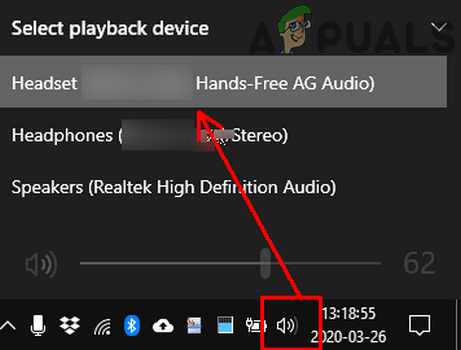
Solution 1: Run the Audio Troubleshooter
You may fail to use the Bluetooth headset if the audio modules of your system are in an error state or not configured properly. In this scenario, running the built-in Audio troubleshooter may clear the glitch, and thus the problem is solved.
- Press Windows + Q keys to open Windows Search and then search for Settings. Now, select Settings in the results pulled by the search.
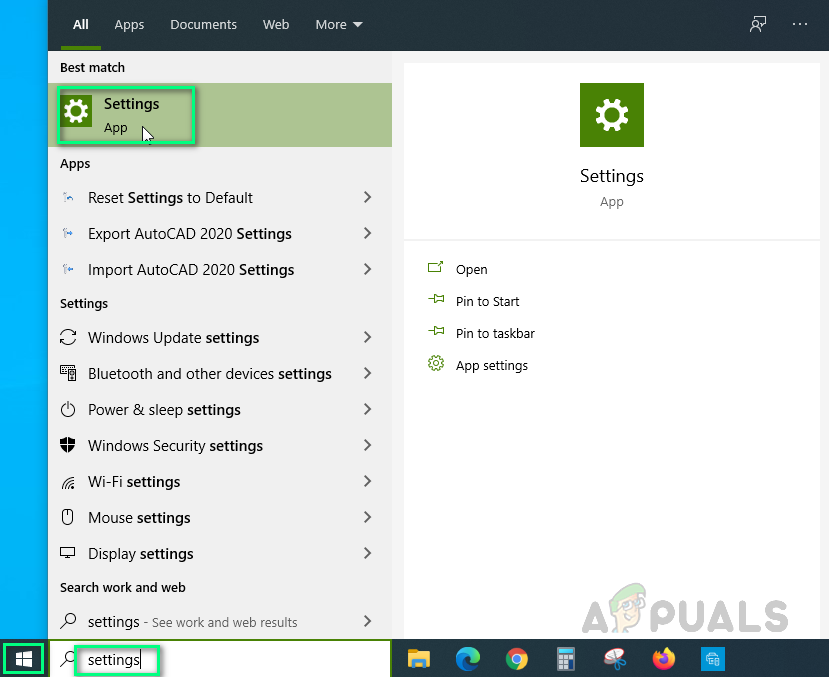
Opening Windows Settings - Now select Update & Security and then, in the left portion of the window, click on Troubleshoot.
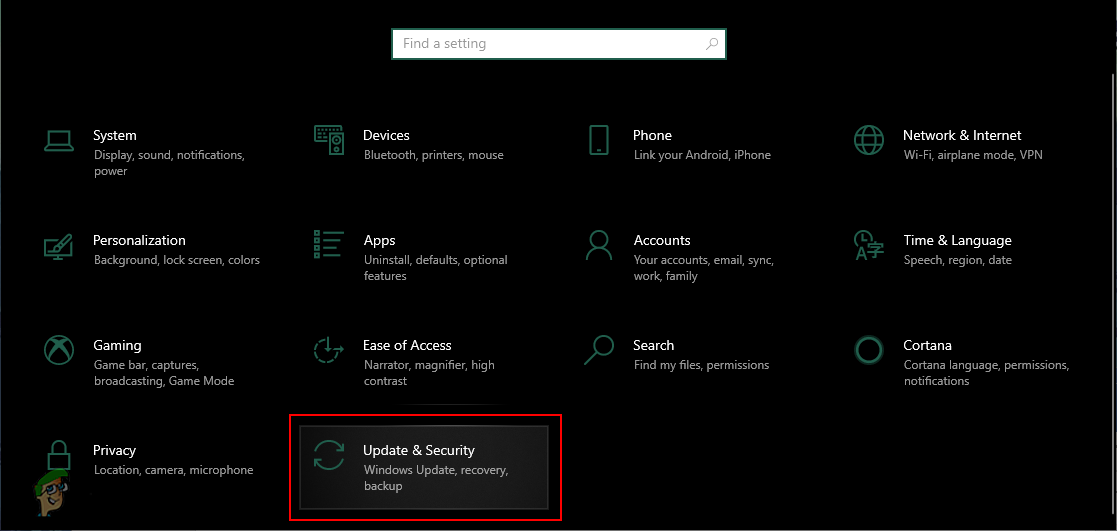
Opening Updates & Security settings - Then, in the right portion of the window, click on Additional Troubleshooters and then expand Playing Audio (in the section of Get Up and Running).

Navigating Additional Troubleshooters - Now click on Run the Troubleshooter and then follow the instructions on your screen to complete the audio troubleshooter.

Launch Playing Audio Troubleshooter - Then check if the Bluetooth headset issue is resolved.
- If not, open the Additional Troubleshooters window (steps 1 to 3) and then expand Recording Audio (in the section of Find and Fix Other Problems).
- Now, click on Run the Troubleshooter and then follow the prompts to complete the process of the Audio Troubleshooter.

Launch the Recording Audio Troubleshooter - Then check if the Bluetooth headset is working fine.
Solution 2: Change the Icon of the Headset in the System Settings to Correct its Type
You may fail to use the Bluetooth headset properly if it is wrongly marked as a speaker (or as another device) in your system settings. In this scenario, changing the icon in the system settings which will change the type of the headset to the correct one may solve the problem.
- Open the Windows Search bar by pressing Windows + Q keys and then type Control Panel. Now, select the Control Panel (in the list of results shown).
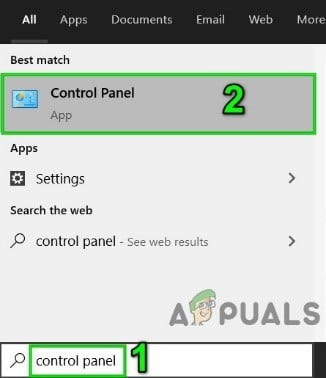
Open Control Panel - Now open the Hardware and Sound option and then click Sound.

Sound in Control Panel - Then right-click on your headset (wrongly marked as a speaker or something else) and select Properties.
- Now click on the Change Icon button and then, in the list of icons, select the headset icon.
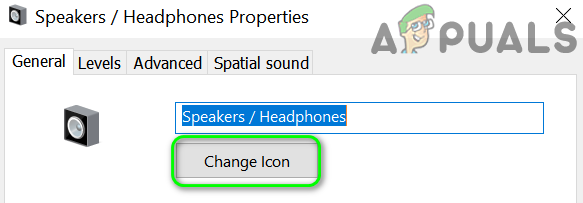
Click on the Change Icon Button - Then apply your changes and check if the headset is working fine.
Solution 3: Disable Microsoft Bluetooth LE Enumerator
The Microsoft Bluetooth LE Enumerator is a native Windows protocol to organize the Bluetooth devices and enhance the communications between the system and other devices. You may encounter the error under discussion if the said Bluetooth protocol hinders the operation of the headset (if the headset is not using the Bluetooth Low Energy). In this scenario, disabling the Microsoft Bluetooth LE Enumerator may solve the problem.
- Unpair the headset and your system.
- Right-click on the Windows button of your system and in the menu shown, select Device Manager.

Open Device Manager - Now expand Bluetooth and right-click on Microsoft Bluetooth LE Enumerator.

Disable Microsoft Bluetooth LE Enumerator - Then in the menu shown, select Disable Device and then confirm to disable the device (ignore the warning about devices not working).
- Now restart your system and upon restart, pair the system and headset to check if the headset issue is resolved.
Solution 4: Disable/Enable the Bluetooth Device’s Services
The headset issue could be a result of a temporary glitch in the Bluetooth-related services of your system. In this case, re-enabling the device’s services may clear the glitch and thus solve the problem.
- Click on the Windows button and then, in the Windows Search bar, type Control Panel. Now, in the results pulled by Windows Search, select Control Panel.
- Then, under the Hardware and Sound option, choose Devices and Printers.

Open Devices And Printers - Now right-click on the Bluetooth device and then, in the menu shown, select Properties.
- Then steer to the Services tab and unselect every service there.
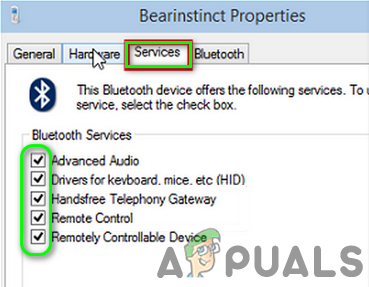
Disable Bluetooth Services of the Headset - Now click on the Apply/OK buttons and then repeat the process to enable the services.
- Then check if the Bluetooth headset is clear of the error.
- If not, then open the Services tab of your Bluetooth device (steps 1 to 3) and only disable the Telephony service.
- Now click on the Apply/OK buttons and then check if the Bluetooth headset issue is resolved.
- If not, then disable the Playback service (in the Bluetooth device’s Properties) and check if the issue is resolved.
- If not, then open the Properties of the Bluetooth device and navigate to the Ports tab.
- Now, enable/disable the Ports one by one (for some Ports, you may have to select your device in the dropdown of the port) and then check if the issue is resolved.

Disable the Bluetooth Com Ports
Solution 5: Disable Applications’ Control Over the Sound Device
You may fail to use the Bluetooth headset if any of your applications are interfering in the operation of the headset as these applications have control over the sound device. In this context, disabling the applications’ control over the sound devices may solve the problem.
- Launch the Windows Search by pressing Windows + Q keys and then type Control Panel. Then, in the results shown by the Windows Search, select Control Panel.
- Now open the Hardware and Sound option and then click on Sound.
- Then right-click on the headset (in the Playback tab) and select Properties.
- Now navigate to the Advanced tab and uncheck the option of Allow Applications to Take Exclusive Control of This Device.
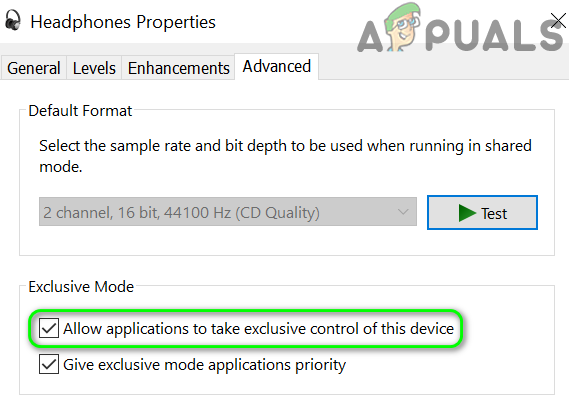
Uncheck the Option of Allow Applications to Take Exclusive Control of This Device - Now click on Apply/OK buttons and then disable all the sound devices that are not in use (in both Playback and Recording tabs).
- Then, in the Sound window, navigate to the Recording tab and right-click on the headset mic.
- Now select Disable and then check if the headset is working fine.
Solution 6: Select the Required Mode of the Bluetooth Headset
Your system may show two devices for the problematic headset (due to the Bluetooth profile used) one as headphone and the other as headset/handsfree. You may encounter the error under discussion if you are using the wrong mode (e.g. if you required headset/handsfree mode but you are using headphones). In this context, selecting the required mode and disabling the other one may solve the problem.
- Press Windows + Q keys simultaneously to launch the Windows Search bar and type Control Panel. Then in the search results, choose Control Panel.
- Now open the Hardware and Sound option and click on Sound.
- Then right-click on the headphone device and select Disable (in the Playback and Recording tabs).
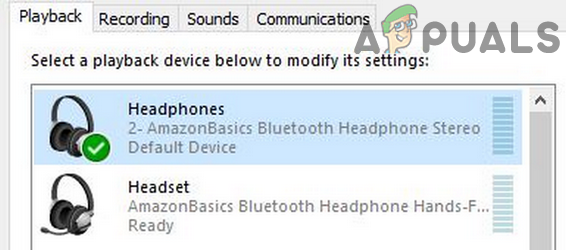
Disable the Headphone - Now, check if the headset issue is resolved.
- If not, then right-click on the handsfree/headset (in Playback tab and Recording tab) and select as Default Device.

Set the Headset as Default - Then check if the Bluetooth headset is working fine.
- If not, then check if disabling the headset (not the headphone device) and setting headphones as the default device (steps 3 to 7) solves the issue.
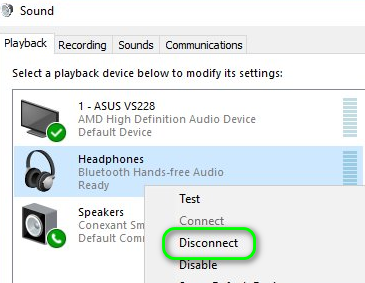
Disconnect Headphones - If even this does not work, open the Recording tab in the Control Panel’s Sound option (step 1 to 2) and right-click on your headset.
- Then, in the menu shown, select Properties and navigate to the Levels tab.
- Now, increase the volume slider of the headset to 100% and check if the issue is resolved (you may have to try more than once). If so, then revert the volume to your comfort level.

Increase Mic Volume to 100%
Solution 7: Reinstall the Bluetooth Drivers
You may fail to use the Bluetooth device properly if you are using wrong Bluetooth drivers or the installed drivers are corrupt. In this context, reinstalling the Bluetooth drivers may solve the problem. If you are using a Sound Manager like Realtek, then remove it to check if it was causing the issue.
- Download the latest version of the Bluetooth drivers of your system from the manufacturer’s website.
- Then unpair all the Bluetooth devices from your headset.
- Now press Windows + Q keys to launch Windows Search and then type Settings. Then, in the list of results, select Settings and open Devices.
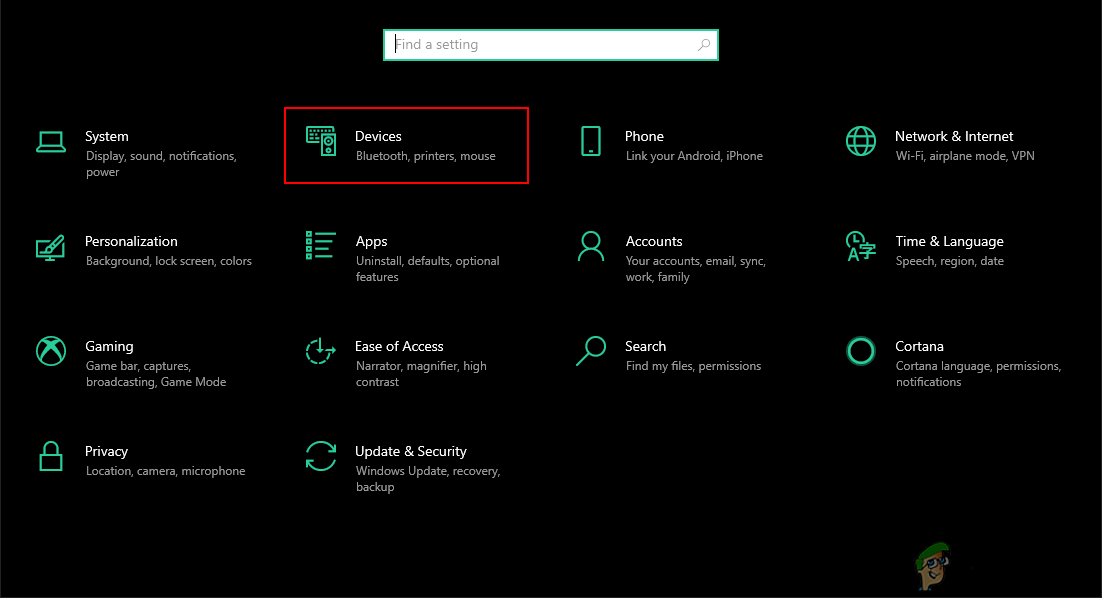
Opening Devices setting in the Windows Settings - Now, select the problematic Bluetooth device and then click on the Remove Device button.
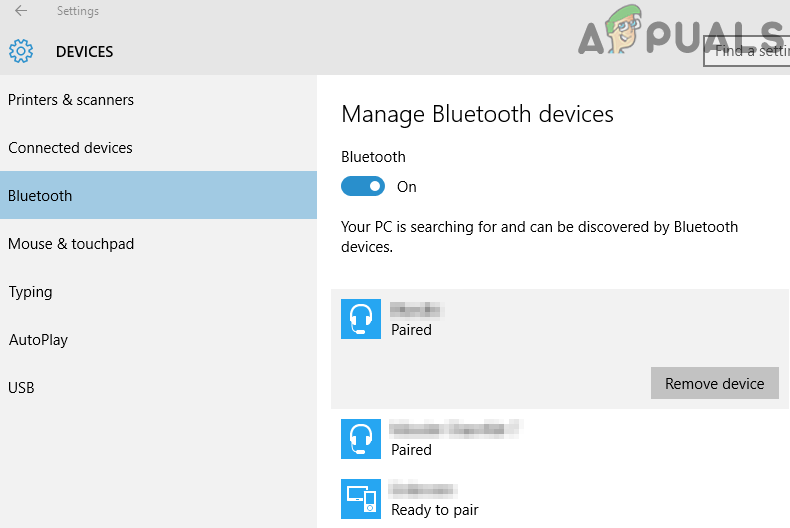
Remove the Bluetooth Device - Then confirm to remove the device and restart your system.
- Upon restart, right-click on the Windows button of your system and then select Device Manager (in the menu shown).
- Now, open the View menu and select Show Hidden Devices.

Show hidden devices - Then expand Bluetooth and right-click on the Bluetooth device.
- Now select Uninstall Device and then check the option of Delete the Driver Software for This Device.
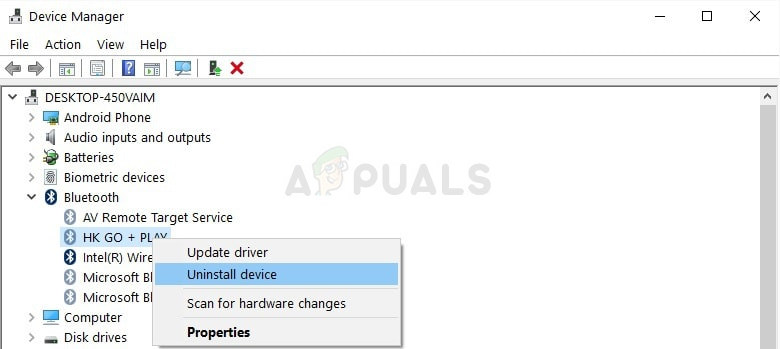
Uninstalling the Bluetooth devices - Then click on the Uninstall button and follow the prompts on your screen to uninstall the Bluetooth driver.
- Repeat the same for any other device related to your headset (even the hidden devices) and restart your system.
- Upon restart, pair the headset and your system to check if the issue is resolved.
- If not, open Settings of your system (step 3) & select Update and Security.
- Now, in the left half of the screen, select Troubleshoot, and then in the right half of the screen, click on Additional Troubleshooters.

Navigating Additional Troubleshooters - Then, in the section of Find & Fix Other Problems, expand Bluetooth and then click on the button of Run This Troubleshooter.
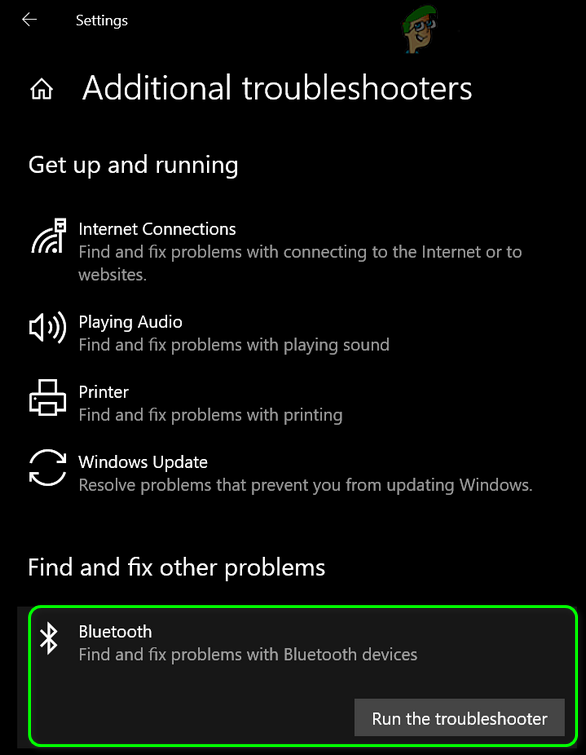
Launch the Bluetooth Troubleshooter - Now, follow the prompts on your screen to complete the Bluetooth Troubleshooter process and then check if the issue is resolved.
- If not, repeat steps 3 to 5 to remove the device from the PC side only.
- Then again pair the devices and wait for at least two minutes (do not use headset or PC).
- Now, check if you can use the Bluetooth headset properly.
If the issue is there, check if removing the Bluetooth controller software helps in solving the problem (if you are not using one, then try to install and use the Bluetooth controller software). You can also try the Windows built-in Speech Recognition to clear out the glitch. If that does not solve the issue, then try to reset your system to the defaults.
If the issue is still there, then maybe your headset or the Bluetooth chip (you can try another Bluetooth USB dongle) of your system is faulty. You may have to get them checked for any hardware issues. If the issue persists even after trying all the solutions, you can set the speaker of your system to headphones and mic to the laptop till the issue is resolved.





